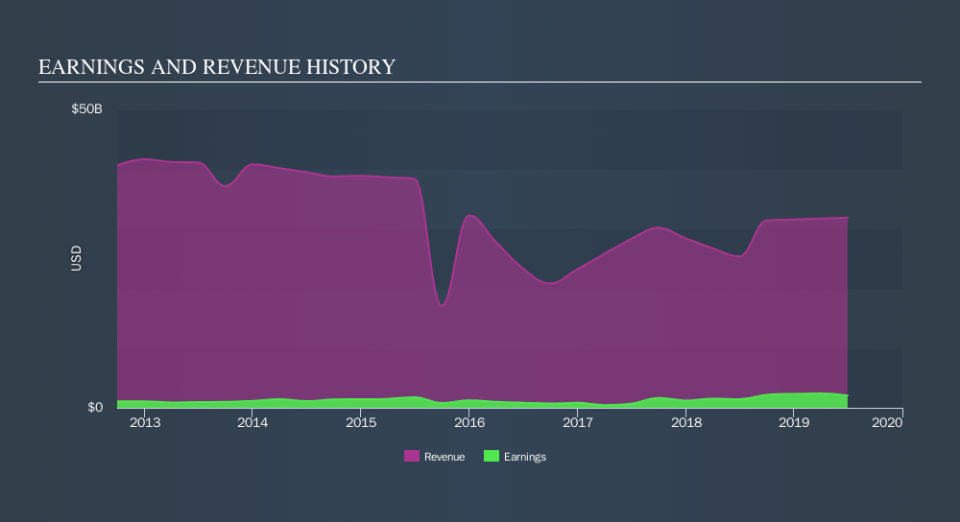Has Johnson Controls International plc (NYSE:JCI) Improved Earnings Growth In Recent Times?

Assessing Johnson Controls International plc's (NYSE:JCI) past track record of performance is a useful exercise for investors. It allows us to understand whether the company has met or exceed expectations, which is a great indicator for future performance. Below, I assess JCI's latest performance announced on 30 June 2019 and evaluate these figures to its historical trend and industry movements.
See our latest analysis for Johnson Controls International
How Did JCI's Recent Performance Stack Up Against Its Past?
JCI's trailing twelve-month earnings (from 30 June 2019) of US$2.1b has jumped 42% compared to the previous year.
Furthermore, this one-year growth rate has exceeded its 5-year annual growth average of 13%, indicating the rate at which JCI is growing has accelerated. What's enabled this growth? Let's take a look at if it is solely attributable to industry tailwinds, or if Johnson Controls International has seen some company-specific growth.
In terms of returns from investment, Johnson Controls International has fallen short of achieving a 20% return on equity (ROE), recording 11% instead. Furthermore, its return on assets (ROA) of 5.6% is below the US Building industry of 8.1%, indicating Johnson Controls International's are utilized less efficiently. However, its return on capital (ROC), which also accounts for Johnson Controls International’s debt level, has increased over the past 3 years from 9.8% to 11%. This correlates with a decrease in debt holding, with debt-to-equity ratio declining from 61% to 34% over the past 5 years.
What does this mean?
Though Johnson Controls International's past data is helpful, it is only one aspect of my investment thesis. Positive growth and profitability are what investors like to see in a company’s track record, but how do we properly assess sustainability? I suggest you continue to research Johnson Controls International to get a more holistic view of the stock by looking at:
Future Outlook: What are well-informed industry analysts predicting for JCI’s future growth? Take a look at our free research report of analyst consensus for JCI’s outlook.
Financial Health: Are JCI’s operations financially sustainable? Balance sheets can be hard to analyze, which is why we’ve done it for you. Check out our financial health checks here.
Other High-Performing Stocks: Are there other stocks that provide better prospects with proven track records? Explore our free list of these great stocks here.
NB: Figures in this article are calculated using data from the trailing twelve months from 30 June 2019. This may not be consistent with full year annual report figures.
We aim to bring you long-term focused research analysis driven by fundamental data. Note that our analysis may not factor in the latest price-sensitive company announcements or qualitative material.
If you spot an error that warrants correction, please contact the editor at editorial-team@simplywallst.com. This article by Simply Wall St is general in nature. It does not constitute a recommendation to buy or sell any stock, and does not take account of your objectives, or your financial situation. Simply Wall St has no position in the stocks mentioned. Thank you for reading.

 Yahoo Finance
Yahoo Finance 
